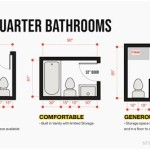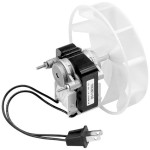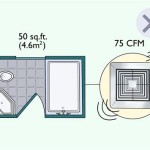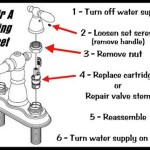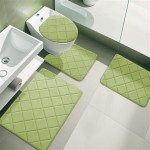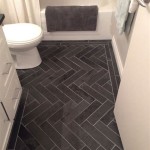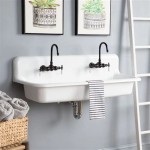How Much Do Bathroom Renovations Cost?
Bathroom renovations are a common home improvement project, offering the potential to increase property value, enhance comfort, and modernize outdated spaces. Understanding the potential costs associated with such projects is crucial for effective budgeting and planning. The price of a bathroom renovation can vary significantly, depending on factors such as the size of the bathroom, the scope of the renovation, the materials selected, and the labor costs in the specific geographic location.
This article delves into the various elements that contribute to the overall cost of a bathroom renovation. It explores the different tiers of renovation projects, from minor cosmetic updates to complete gutting and rebuilding, and examines the price ranges typically associated with each. Additionally, the article will identify specific cost drivers, such as plumbing alterations, electrical work, and the selection of fixtures and finishes. By providing a comprehensive overview of these cost factors, homeowners can gain a clearer understanding of the financial commitment involved in transforming their bathrooms.
Key Cost Drivers in Bathroom Renovations
Several key components influence the overall price tag attached to a bathroom renovation. These elements can be categorized into materials, labor, and unexpected costs, each of which can significantly impact the final budget. A thorough understanding of these cost drivers is essential for accurate budgeting and avoiding unforeseen expenses during the renovation process.
Materials: This category encompasses all the physical components that are installed in the bathroom. Significant expenses are associated with fixtures such as toilets, sinks, bathtubs, showers, and faucets. The price range for these items can vary dramatically based on brand, style, and material. For example, a standard porcelain toilet is considerably cheaper than a high-end, dual-flush model. Similarly, a prefabricated shower unit will typically cost less than a custom-tiled shower enclosure. Flooring is another major material cost, with options ranging from budget-friendly vinyl to more expensive ceramic tile, porcelain tile, or natural stone. Other material costs include drywall, paint, grout, sealant, lighting fixtures, and ventilation fans. The cumulative cost of these materials can represent a substantial portion of the overall renovation budget.
Another aspect of material costs relates to the quality and durability of the chosen items. While selecting cheaper materials might seem appealing in the short term, they may require more frequent repairs or replacements in the long run, ultimately increasing the overall cost of ownership. Opting for higher-quality, more durable materials can often prove to be a more cost-effective investment in the long term, reducing the need for future repairs and replacements.
Labor: The cost of labor represents the expense of hiring skilled professionals to perform the various tasks involved in the renovation. This typically includes plumbers, electricians, carpenters, tilers, and general contractors. Plumbers are essential for handling water supply lines, drain pipes, and fixture connections. Electricians are responsible for ensuring safe and compliant electrical wiring for lighting, outlets, and ventilation. Carpenters may be needed for framing, installing cabinetry, and other structural work. Tilers are responsible for installing flooring, shower enclosures, and backsplashes. A general contractor oversees the entire project, coordinating the various tradespeople and ensuring that the renovation progresses smoothly.
Labor costs can vary significantly depending on the geographic location, the experience level of the tradespeople, and the complexity of the project. Projects involving significant plumbing or electrical work will generally incur higher labor costs. Obtaining multiple quotes from different contractors is recommended to ensure a competitive price. It is also important to verify that the contractors are licensed and insured to protect against liability in case of accidents or damages during the renovation process.
Unexpected Costs: Even with careful planning and budgeting, unforeseen issues can arise during a bathroom renovation, leading to unexpected costs. These issues can include hidden plumbing problems, such as leaky pipes or corroded fittings, which may require immediate repair or replacement. Similarly, electrical wiring that is not up to code may need to be upgraded to ensure safety and compliance. Structural problems, such as water damage or mold growth, may also be uncovered during the renovation process, necessitating costly remediation work.
To mitigate the risk of unexpected costs, it is advisable to allocate a contingency fund of approximately 10-20% of the total renovation budget. This fund can be used to cover any unforeseen expenses that may arise. Additionally, it is important to carefully inspect the existing bathroom before starting the renovation to identify any potential problems that may need to be addressed. Consulting with experienced professionals can also help to identify potential issues and develop strategies to minimize the risk of unexpected costs.
Levels of Bathroom Renovation and Associated Costs
Bathroom renovations can range from minor cosmetic upgrades to complete overhauls. The scope of the project directly influences the overall cost. Understanding these levels can help homeowners determine the most appropriate approach for their budget and needs.
Cosmetic Updates: This level of renovation typically involves making superficial changes to the bathroom without altering the layout or underlying infrastructure. Common cosmetic updates include painting the walls, replacing the mirror, updating the lighting fixtures, and installing new accessories, such as towel bars and soap dishes. These types of renovations are generally the most affordable, with costs ranging from $1,000 to $5,000. The primary focus is on improving the appearance of the bathroom without incurring significant expenses on plumbing or electrical work. This is a suitable option for bathrooms that are structurally sound but aesthetically outdated.
Mid-Range Renovations: Mid-range renovations involve more extensive changes than cosmetic updates, but they still typically avoid major alterations to the bathroom's layout or plumbing. This level of renovation may include replacing the toilet, sink, or vanity, installing new flooring, and retiling the shower or bathtub surround. The costs for mid-range renovations typically range from $5,000 to $15,000. This level of renovation is suitable for bathrooms that require more than just cosmetic improvements but do not necessitate a complete overhaul. It allows for significant upgrades to the fixtures and finishes, resulting in a more modern and functional space.
High-End Renovations: High-end renovations involve a complete transformation of the bathroom, often including significant alterations to the layout, plumbing, and electrical systems. This level of renovation may include moving walls, installing a new bathtub or shower, adding a double vanity, and incorporating high-end finishes, such as custom cabinetry, natural stone countertops, and designer lighting fixtures. The costs for high-end renovations can range from $15,000 to $50,000 or more, depending on the scope of the project and the materials selected. High-end renovations are suitable for bathrooms that are outdated, dysfunctional, or in need of a complete overhaul. This level of renovation allows for a fully customized space that meets the specific needs and preferences of the homeowner.
Strategies for Controlling Bathroom Renovation Costs
Managing the costs of a bathroom renovation effectively requires careful planning, informed decision-making, and strategic cost-cutting measures. By implementing these strategies, homeowners can maximize the value of their renovation investment and avoid unnecessary expenses.
Planning and Budgeting: Before commencing any renovation project, it is crucial to develop a detailed plan and budget. This involves defining the scope of the renovation, identifying the desired features and finishes, and estimating the costs associated with each element. Obtain multiple quotes from different contractors and suppliers to ensure a competitive price. Prioritize essential upgrades and be willing to make compromises on less critical features to stay within budget. A well-defined plan and budget can help to prevent scope creep and ensure that the renovation remains on track financially.
Material Selection: The selection of materials has a significant impact on the overall cost of a bathroom renovation. Explore different material options and compare prices to find the best value. Consider using less expensive alternatives for certain features, such as opting for ceramic tile instead of natural stone. Look for sales and discounts on materials and fixtures. Consider purchasing materials in bulk to take advantage of volume discounts. Reusing existing fixtures or materials, if possible, can also help to reduce costs. Making informed material selection decisions can significantly reduce the overall renovation expenses.
DIY versus Professional Installation: Deciding whether to handle certain aspects of the renovation as a DIY project or to hire professionals can impact the cost. While DIY projects can save on labor costs, it is important to assess one's skills and experience realistically. Improperly installed plumbing or electrical work can lead to costly repairs and safety hazards. Consider handling simpler tasks, such as painting or demolition, as DIY projects, while leaving more complex tasks, such as plumbing and electrical work, to qualified professionals. Combining DIY and professional installation can strike a balance between cost savings and quality workmanship.
Prioritizing Functionality and Value: When selecting features and finishes for the bathroom renovation, prioritize functionality and value over purely aesthetic considerations. Choose durable and low-maintenance materials that will withstand daily use and last for many years. Focus on improving the functionality of the bathroom to meet the specific needs of the occupants. Avoid unnecessary upgrades or features that will not add significant value to the space. By prioritizing functionality and value, homeowners can ensure that their renovation investment yields the greatest return.

How Much Does A Bathroom Remodel Cost 2024 Data Angi

Bathroom Remodeling Costs In Dc 2024 Sweeten

How Much Does Bathroom Renovation Cost In 2024 I Did It For 20 750

Bathroom Renovation Cost How Much To Budget For A Remodel

Bathroom Remodeling Costs In New Jersey 2024 Sweeten Com

Palmer Residential How Much Does A Bathroom Remodel Cost

2024 How Much Does A Bathroom Renovation Cost In

How Much Does A Bathroom Renovation Cost In Lendi

The Cost Of Bathroom Renovations In 2024

Calculator How Much Does It Cost To Remodel A Bathroom

